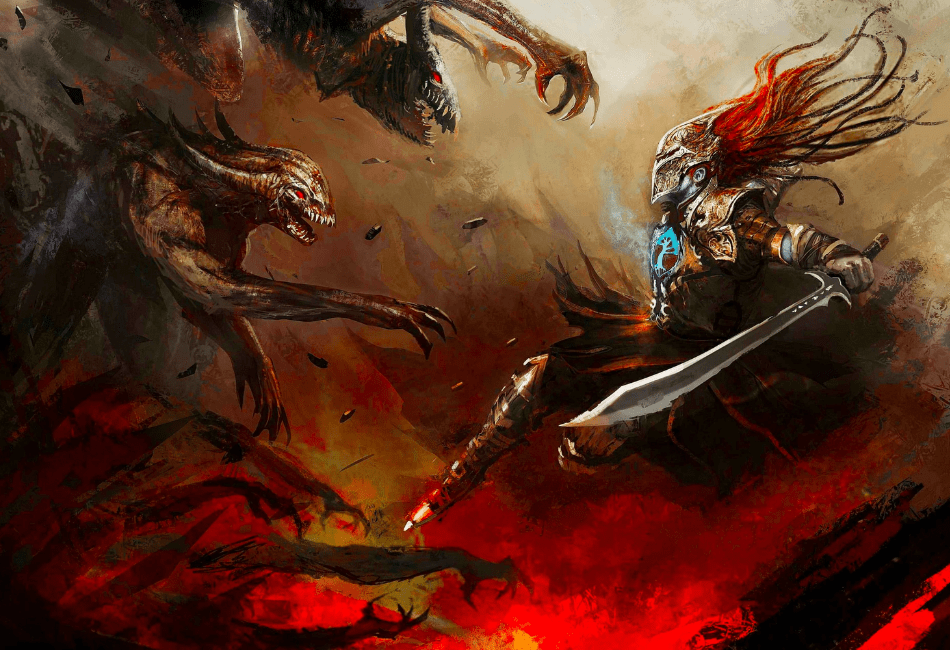Because Dungeons and Dragons is a fantasy tabletop RPG, it can be a story about the white knights on fiery steeds. The Cleric can be the answer to the question of one of my favorite songs; “where have all the good men gone, and where are all the gods?” Indeed, every player has the potential to be the needed hero in a D&D campaign, and every hero needs mighty power and courage to conquer evil.
Every hero also deserves a companion by their side to aid them in great peril; even heroes are not invincible and immune to temporary weaknesses. If you want to be a hero but you think you do not have what it takes, I have a spell in mind. If you are the companion by the hero’s side, this spell will also be fruitful in your mission. I am talking about Heroism, a level one enchantment spell.
A simple touch of the Heroism spell imbues its target with the bravery needed to face a greater foe. They become more resilient to the incoming flurry of swords and blows like a proper champion who will not easily bow down to danger. If you want to be a better hero, or if you want your friends to be better heroes, the Heroism spell might be for you. This Heroism 5e guide will help you understand more about this spell.
Bottom Line Up Front: What is Heroism in D&D 5e?
Heroism is a level one enchantment spell you can find in the Player’s Handbook on page 250. This spell is an enchantment spell similar to Mind Sliver and Zone of Truth because it fills the target’s mind with the vigor to become more courageous. Below are the crucial facts about the Heroism spell in D&D 5e.
- Heroism
- Level one enchantment
- Casting Time: One action
- Range: Touch
- Components: V, S
- Duration: Up to one minute via concentration
How to use Heroism in D&D 5e
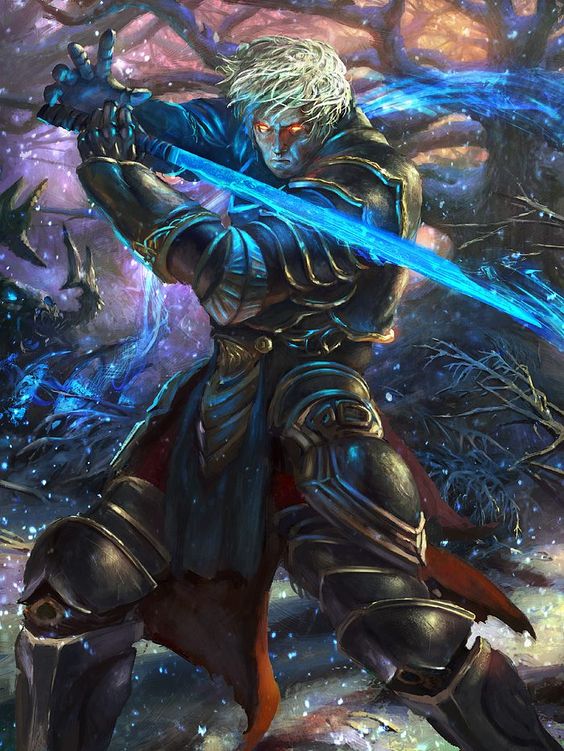
Before you can provide a boost to your friends (or yourself), you need to meet the spell’s requirements first. Below is an easily digestible list of essentials to follow through to continue casting the Heroism spell.
- You must know the Heroism spell or have it prepared: To cast a spell, it must be in your arsenal, and different classes have different approaches. Some, e.g., the Bard and Sorcerer, know spells while others, e.g., the Wizard and Cleric, prepare them from an available list.
- You must have at least a level one spell slot to cast Heroism: Since Heroism is a level one spell, you need to use a spell slot of the same level or possibly higher. Using a higher-level spell slot will change the Heroism spell’s effects, as described in the next section.
- You need to use your action during combat to cast Heroism: Casting it seconds before a battle is also a viable option to circumnavigate this mechanic.
- You need to speak freely in an audible voice to cast Heroism: Heroism requires a verbal component.
- You need to move your arms freely to cast Heroism: Heroism requires the somatic component.
- You must touch the Heroism spell’s target: Touching someone upon casting this spell will give them the effects of Heroism.
- Your target must be a willing participant in the Heroism spell: In other words, you cannot cast this spell on someone who does not want to be affected by its effects, such as your enemies.
- You must concentrate on casting the Heroism spell: I talked about D&D 5e’s concentration mechanic in my previous articles, so I would recommend you to read them, e.g., the Pass without Trace 5e Guide. In summary, your spell will last while you focus on it, and making any of the points below can break your concentration.
- Casting another spell that requires concentration.
- Being incapacitated or killed.
- Failing a Constitution saving throw after receiving damage (you need to make this throw every time you receive damage while concentrating).
- Failing a Constitution saving throw from various environmental situations (as per the DM’s ruling).
After confirming that you meet all these requirements, you successfully cast Heroism at a simple touch of your target. The spell’s effects immediately take place while it lasts, i.e., as long as you concentrate on it. To know what Heroism can do upon casting it on a willing creature, read the next section.
How does Heroism work in D&D 5e?
Bravery fills up your target’s psyche, and the following effects occur:
- The target becomes immune to the “Frightened” condition: Some creatures have the ability to give the “Frightened” condition on others, such as the scarecrow’s “Terrifying Glare” action. Someone with this condition gains disadvantages in their ability checks and attack rolls while their source of fear is within their vision. Additionally, an affected person cannot willingly move closer to the source of fear. Heroism prevents its target from being affected by this condition.
- At the start of each of the target’s turns, they gain temporary HP equal to the caster’s spellcasting ability modifier: The spellcasting ability modifier depends on the caster’s class; e.g., the Wizards use their Intelligence modifier.
- As per the D&D 5e’s rules, temporary HP will not stack every turn: For example, the Heroism spell grants its target four temporary HP every start of their turn. On turn one, they get the bonus. On turn two, it does not add to eight; instead, the target must choose whether to pick the four temporary HP they get in turn two or remain with what the temporary HP left on turn one.
- The temporary HP disappears when Heroism ends: Therefore, it will not remain with the target after its duration or abrupt halt.
- You can target more creatures with Heroism if you use a spell slot higher than level one: For every level after one, you can have an additional target. For example, you can target three people with Heroism if you use a level three spell slot.
Heroism is a simple spell, but it leaves many beginners confused due to how temporary HP and the “Frightened” condition works. Many players often make the mistake of stacking up the temporary HP, which is not what the spell should do; if it does, Heroism would be too powerful for a level one spell! To clear up any misconceptions about Heroism, I dedicate the next section to demonstrating the spell in battle.
Example scenario for using Heroism in D&D 5e
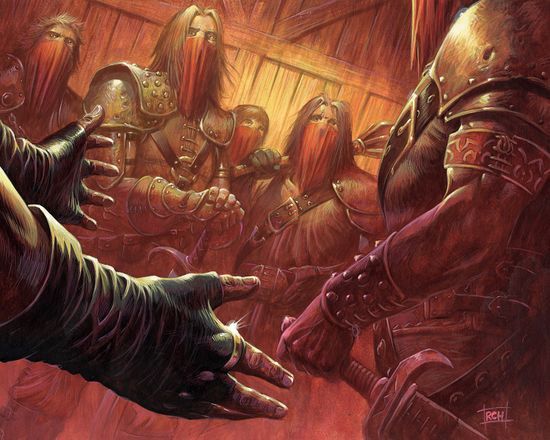
As a Hero main in Smash Ultimate, I wish I had this spell, so I have the gall to go offstage for a spike attempt. Welcome to Arthur’s Lab, where we confuse D&D spells with a video game released in 2018. We will be testing out the Heroism spell through a simulated combat demonstration, and this time, the bandits will be our ally instead of our enemy. Instead, we will have a real monster by the enemy today.
Since Marshal the Half-elf Wizard cannot cast this spell as it is not part of the Wizard spell list, Shorty the Halfling Bard will do the honors. Bandits also accompany us in this experiment as allies, and together, they will face off against a Scarecrow, a medium-sized construct with chaotic evil intentions. Below are the facts about these participants that will play a huge role in this demonstration.
Shorty
- Charisma modifier: +2
Bandits
- HP: 30/30
Scimitar (Action):
A melee weapon attack with a +3-attack modifier. On a hit, the target receives 1d6 + 1 slashing damage.
Scarecrow
- HP: 36/36
Claw (Action):
A melee weapon attack that deals slashing damage. The target must succeed on a DC 11 Wisdom saving throw if they are a creature. On a failure, the target becomes afflicted with the “Frightened” condition until the end of the scarecrow’s next turn.
Multi-attack (Action):
Allows the scarecrow to attack twice using Claw.
First scenario: the scarecrow attacks and frightens the bandits
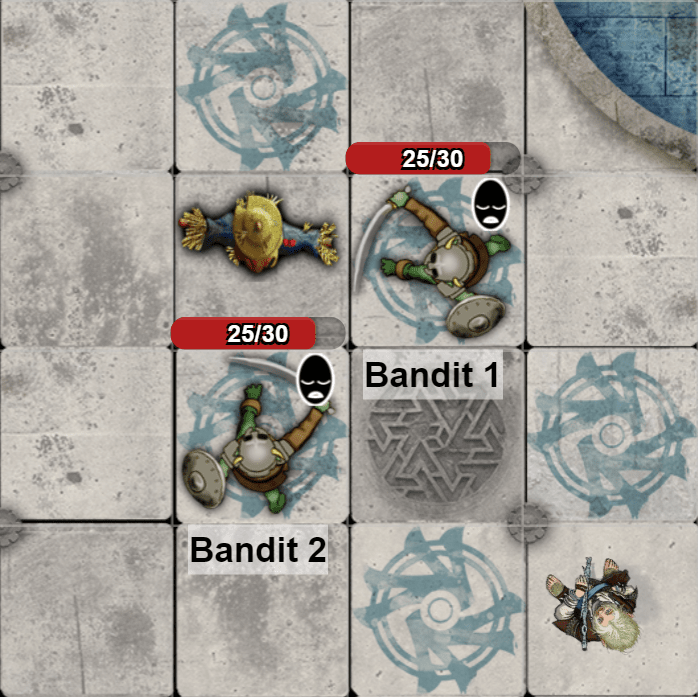
The scarecrow is the first to move in this battle, and it spends its turn going near the bandits. Then, it uses its multi-attack action to strike both bandits once using its Claw attack. After calculating the scarecrow’s attack roll and comparing it to the bandits’ AC, they both get hit and receive five slashing damage; thus, their HP goes down by five. Furthermore, they must roll for their Wisdom saving throw.
According to the attack’s rules, any creature hit with it must succeed on a Wisdom saving throw, or else they will become afflicted with the “Frightened” condition. After rolling a d20 and adding the appropriate saving throw modifier, both bandits fail the Wisdom saving throw. Thus, they suffer from the effects of the “Frightened” condition. The scarecrow ends its turn.
Second scenario: Shorty casts Heroism on Bandit 2
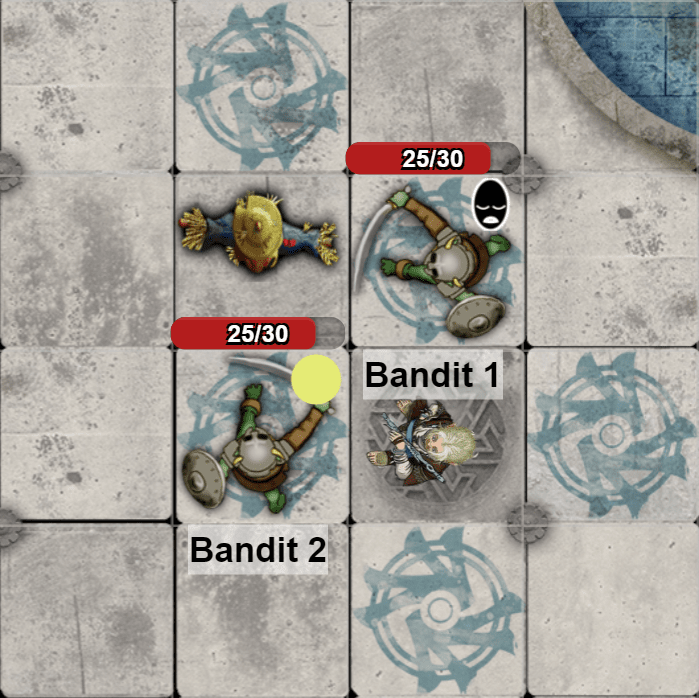
It is now Shorty’s turn, and she uses her turn to cast Heroism on Bandit 2. She knows the spell and has the appropriate spell slots available. For this casting, she uses a level one spell slot. Since the spell has a range of touch, she goes near Bandit 2 and touches him. Thanks to the spell’s effects, Bandit 2’s “Frightened” condition caused by the scarecrow’s Claw attack disappears.
Furthermore, Bandit 2 gains temporary HP equal to Shorty’s spellcasting ability modifier. Since her spellcasting ability is Charisma, and her Charisma modifier is +2, Bandit 2 gains two temporary HP at the start of every turn. However, this temporary HP does not stack every turn. Shorty remains concentrated on the Heroism spell for as long as she can until the spell ends.
Third scenario: the bandits attack the scarecrow
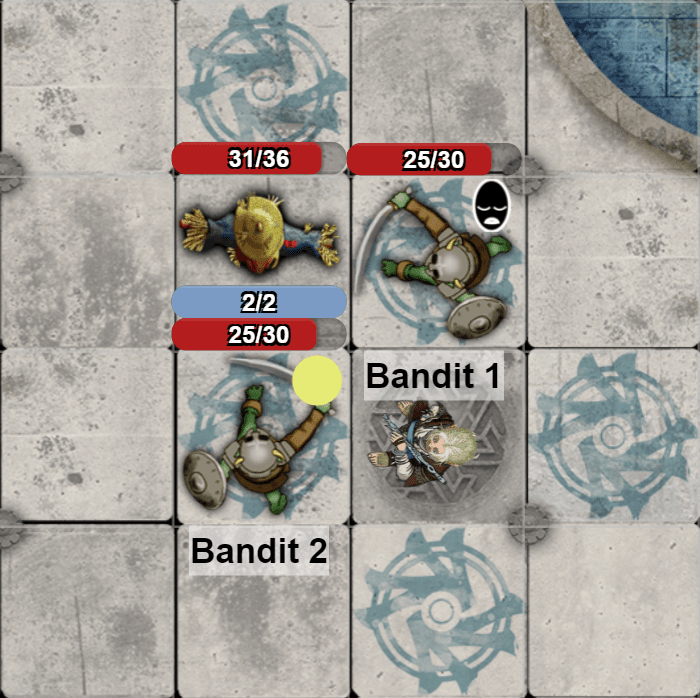
It is the bandits’ turn, with Bandit 1 going first, followed by Bandit 2. Bandit 1 is still afflicted by the “Frightened” condition thanks to the scarecrow’s Claw attack. However, Bandit 2 no longer suffers this condition due to the Heroism spell cast by Shorty. Both bandits decide to attack the scarecrow using their scimitars. Bandit 1 attacks first, but his attack roll is at a disadvantage because of his condition.
So, he rolls two d20s and picks the lower result. After calculating Bandit 1’s final attack roll considering his disadvantage and comparing it with the scarecrow’s Armor Class, his scimitar attack misses. It is now Bandit 2’s turn to attack the scarecrow. He does not suffer the same disadvantage as Bandit 1 because his “Frightened” condition disappeared thanks to Heroism. So, he rolls a d20 for his scimitar attack roll.
After calculating Bandit 2’s attack roll and comparing it with the scarecrow’s Armor Class, his scimitar attack hits, causing five slashing damage. Furthermore, Bandit 2 gained two temporary HP due to Heroism before he made his attack since it manifests at the start of his every turn while the spell lasts.
Fourth scenario: the scarecrow attacks the bandits again
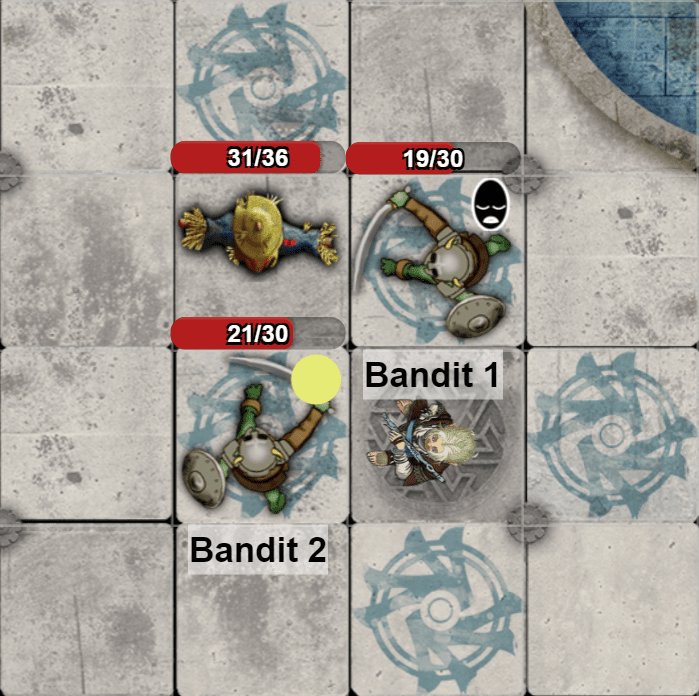
It is the scarecrow’s turn once more, and it does the same thing it did the previous turn: injure both bandits with its Claw attack. It performs its attack roll and confirms that both attacks hit the bandits with six slashing damage. Bandit 1’s HP goes down from 25 to 19. However, Bandit 2 has two temporary HP from Heroism. Therefore, it tanks two of the six slashing damage, and the rest of it goes to his HP.
In other words, Bandit 2’s HP goes down from 25 with two temporary HP to 21 without temporary HP. Furthermore, the Claw attacks give them the “Frightened” condition again, but Bandit 2 is immune to it thanks to Heroism. Therefore, only Bandit 1 becomes afflicted with the condition.
Fifth scenario: Shorty casts Heroism at a higher level
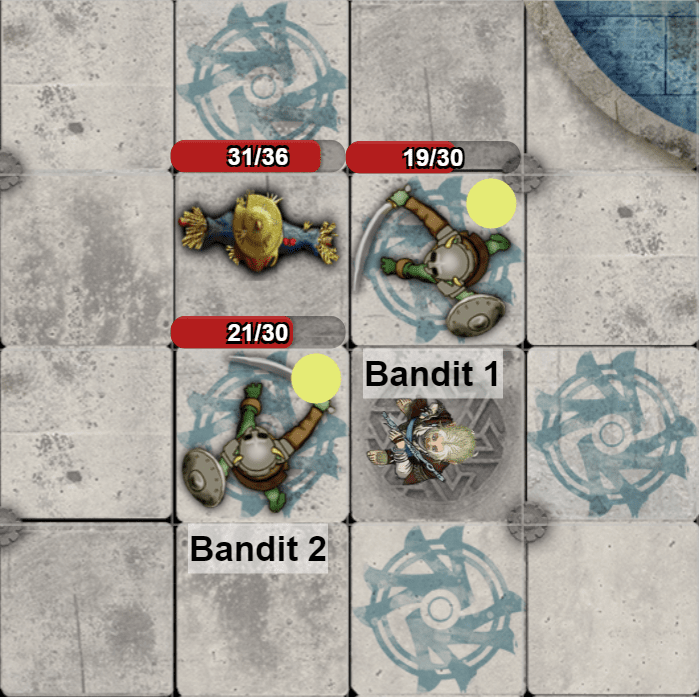
It is Shorty’s turn again, and she ends her concentration on Heroism to cast it again but with a higher-level spell slot. She uses one of her level-two spell slots to cast Heroism. According to the spell’s mechanics, casting Heroism using a higher-level spell slot allows the caster to target one more creature per level after level one.
Since Shorty uses a level two spell slot, she can target two people with Heroism, and she targets both bandits with it. Both gain two temporary HP and become immune to the “Frightened” condition. Bandit 1, who received this condition in the previous turn, becomes cured of it.
Sixth scenario: the bandits’ temporary HP from Heroism does not stack
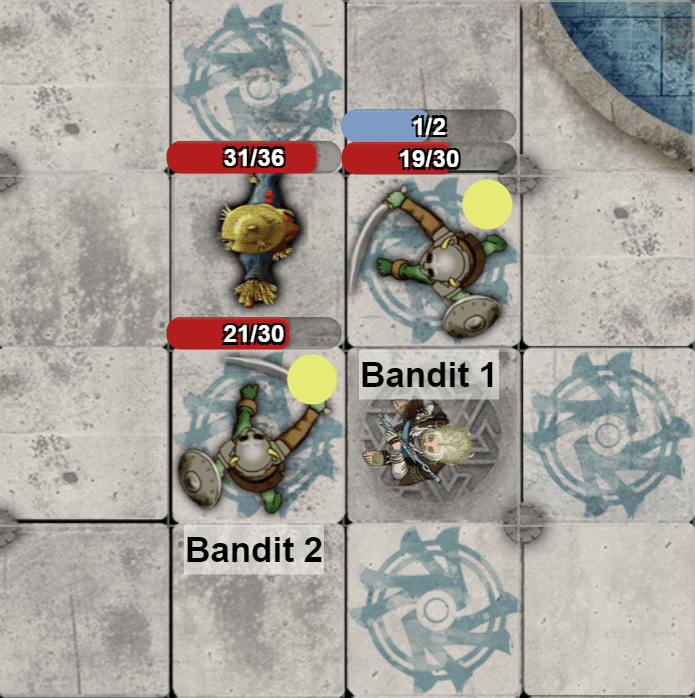
With a bit of tweaking in the lab, we changed the turn order; now, the scarecrow goes first, followed by the bandits. The scarecrow attacks Bandit 1 with a Claw attack and succeeds in it after rolling for the attack roll. Unfortunately for the scarecrow, he only deals one slashing damage to him. We subtract it from Bandit 1’s two temporary HP; he now has 19 HP with one temporary HP.
It is now Bandit 1’s turn. Thanks to Heroism, he can have two temporary HP at the start of his turn. He still has one temporary HP left, but it will not add with the newly-acquired two temporary HP. Bandit 1 must either choose to have one temporary HP before the start of his turn or two temporary HP from the start of his turn; he chooses the two instead.
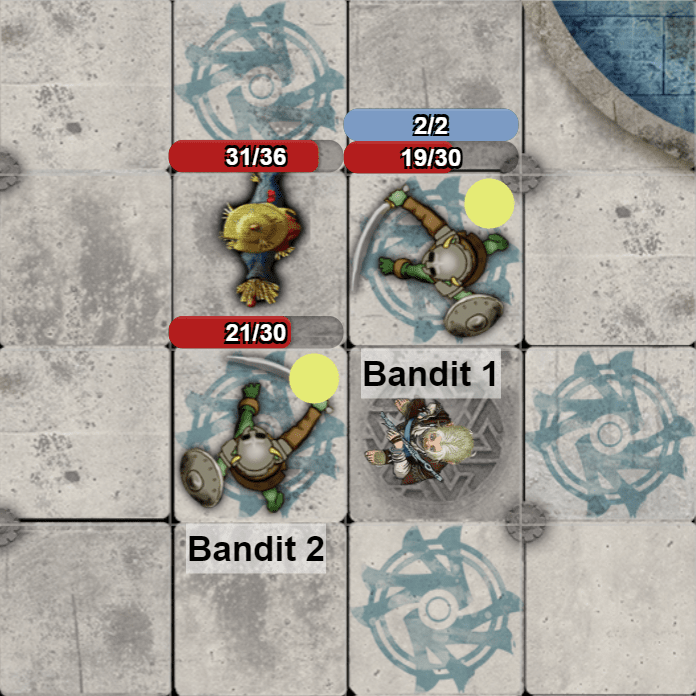
Who can cast Heroism in D&D 5e?
Two classes (Bard and Paladin), four subclasses (Battle Smith Artificer, Glory Paladin, Order Cleric, and Peace Cleric), and one background (Boros Legionnaire) can pick up the Heroism spell either as part of their spell list or through a subclass or background feature. Additionally, one subclass from the Unearthed Arcana can also get it (Hill Giant Soul Sorcerer).
Classes that can cast Heroism in D&D 5e
Bards and Paladins have the Heroism spell as part of their spell list; therefore, they can pick it up once they have a level one spell slot. Bards gain two of them at the start of level one, but Paladins can have them as early as level two. Below is a table containing some important facts about these classes, such as their source and the spellcasting ability on which you can base Heroism’s temporary HP.
|
Classes that can cast Heroism |
Class Source |
Spellcasting Ability Modifier |
| Bard | Player’s Handbook, page 51 | Charisma modifier |
| Paladin | Player’s Handbook, page 82 | Charisma modifier |
Subclasses that can cast Heroism in D&D 5e
Battle Smith Artificers, Glory Paladins, Order Clerics, and Peace Clerics have access to the Heroism spell in D&D 5e thanks to one of their subclass features. Additionally, the Hill Giant Soul Sorcerer from the Unearthed Arcana can have it. Below are some important facts about each subclass, such as their source and the appropriate modifier.
|
Subclasses that can cast Heroism |
Originating Class | Subclass Feature for Heroism | Subclass Source | Class Source |
Spellcasting Ability Modifier |
| Battle Smith | Artificer | Battle Smith Spells | Tasha’s Cauldron of Everything, page 18 | Tasha’s Cauldron of Everything, page 9 | Intelligence modifier |
| Oath of Glory | Paladin | Oath Spells | Tasha’s Cauldron of Everything, page 53 | Player’s Handbook, page 82 | Charisma modifier |
| Order Domain | Cleric | Order Domain Spells | Tasha’s Cauldron of Everything, page 31 | Player’s Handbook, page 56 | Wisdom modifier |
| Peace Domain | Cleric | Peace Domain Spells | Tasha’s Cauldron of Everything, page 32 | Player’s Handbook, page 56 | Wisdom modifier |
| Hill Giant Soul | Sorcerer | Mark of the Ordning | Unearthed Arcana: Giant Soul Sorcerer, page 1 | Player’s Handbook, page 99 | Charisma modifier |
Artificers, Paladins, and Clerics can access their spell list and change the spells they bring into combat when they perform a long rest; this process is known as preparing their spells. Thus, their respective subclasses in this list, i.e., the Battle Smith Artificer, Glory Paladin, Order Cleric, and Peace Clerics, can have the Heroism spell as always prepared thanks to their subclass features.
The Battle Smith Artificer’s Battle Smith Spells and the Glory Paladins’ Oath Spells allow them to have the Heroism spell as always prepared when they reach level three. Meanwhile, both Order and Peace Clerics have them always prepared when they reach level one. It is also not a part of their prepared spell count. However, they still need at least an available level one spell slot to cast it.
Sorcerers with the Giant Soul sorcerous origin know Heroism as an additional spell thanks to their Mark of the Ordning subclass feature. It automatically grants them some spells as part of their Sorcerer spells. Additionally, it does not count against their predetermined number of known spells. However, their giant type of origin should be a Hill Giant; they get Heroism and Shillelagh at level one.
Also, note that the Giant Soul sorcerous origin is Unearthed Arcana content, which means it is not eligible for Adventurer League campaigns. Also, they have not been play-tested as extensively as the official subclasses. Still, you can pick this subclass if you want to; remember to ask your DM first.
Backgrounds that can cast Heroism in D&D 5e

Characters with the Boros Legionnaire background have access to the Heroism spell thanks to their Boros Guild Spells background feature. It adds Heroism alongside a couple of other spells to their class’s spell list. As implied, the character with this background must be a spellcaster in the first place since the background feature only allows the spell for them to pick up.
For example, a Barbarian with this background cannot cast the Heroism spell using the Boros Guild Spells background feature because they cannot cast spells in the first place. Heroism becomes available alongside Guiding Bolt when the character can cast level one spells.
You can find more info about this background in the Guildmaster’s Guide to Ravnica on page 40. Anything within this source is for a Ravnica setting campaign; therefore, if your game is set in the Forgotten Realms, a character with the Boros Legionnaire background will not make sense. So, ask your DM beforehand if they will allow you to choose it as a background.
Creative and useful ways to use Heroism in D&D 5e
Heroism is a great assist spell, and it can assist your teammates or yourself. However, some people find it hard to know when the appropriate time to cast it is. To ease your worries, know that you can cast it in battle, and it will be helpful most of the time. Below are some reasons and innovative ways to cast Heroism in D&D 5e.
- Negating the “Frightened” disadvantage
- Optimizing “Frightened” martial classes
- Acting as the tank
Negating the “Frightened” disadvantage using Heroism in D&D 5e
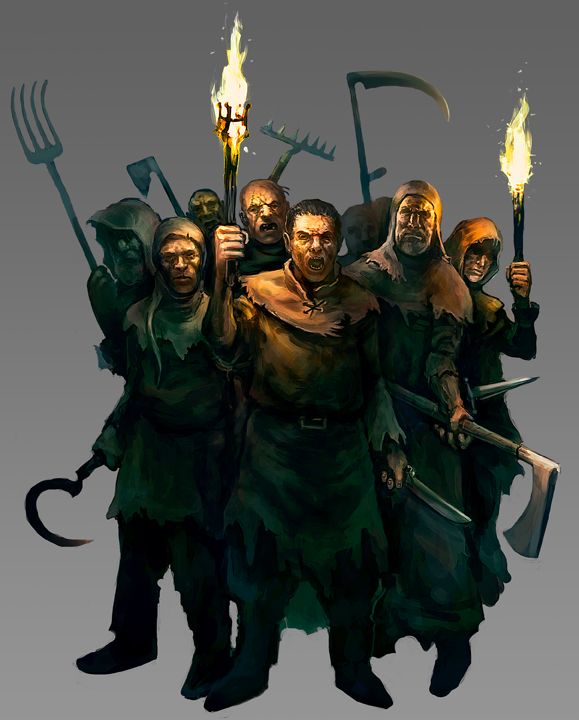
One of the “Frightened” condition’s effects is that it imposes disadvantages on ability checks and attack rolls so long as the source of fear is within the victim’s line of sight. If you and the monster causing the condition are in a labyrinth, like some sort of Scooby Doo episode, then this disadvantage would not mind much since you can hide from the monster to perform normally.
However, combat is not always set in a labyrinth where there is a chance you cannot see the monster. Most of the time, combat commences in open areas where the monster is within your line of sight. If there is nowhere to cover, like an open room, you are doomed. The Heroism spell effectively eliminates this issue by making its target immune to the “Frightened” condition while the spell lasts.
Even if multiple enemies have abilities to impose the condition on you, it will not matter if you are under the effects of Heroism because you are immune to it. So, if you are facing off against enemies that have these kinds of abilities, like the Quasit and the Scarecrow, it is useful to have Heroism by your side.
Optimizing “Frightened” martial classes using Heroism in D&D 5e
Another effect that the condition imposes on its victims is that they cannot go near the source of fear. Spellcasters and characters with ranged weapons may not have a problem with this effect, but characters that rely on melee fighting, like Fighters and Barbarians, become synonymous with toilet water. If they cannot willingly go near their target, then they might as well waste their turn.
The Heroism spell saves the day for them by removing the “Frightened” condition via gaining immunity to it. Plus, while the spell is active, enemies cannot impose the condition on them. If your party consists of adventurers who love stabbing, crushing and slapping their enemies with their fun sticks (i.e., their weapons), Heroism will definitely be handy.
Acting as the tank using Heroism in D&D 5e
Enemies that deal small amounts of damage may seem tolerable until you realize you are already at one HP after the bandit has stabbed you for three to four slashing damage every round. Spellcasters are susceptible to this phenomenon due to their initially low HP; if you are a spellcaster, you need something to keep you on your toes while the enemy punches you like a sandbag.
Heroism is a great way to assume the role of the tank because it gives temporary HP at every start of the target’s turn. If the enemy is slowly chipping away your or your friend’s HP, the temporary HP granted by Heroism can soak up some of its damage. It slows down the enemy’s attempt to make you unconscious.
For example, a bandit attacks the Paladin, dealing five slashing damage. Meanwhile, the Paladin is at a disadvantage, making his attacks hit less. If the bandit does this for ten rounds, he deals approximately 50 slashing damage, which is a lot. If the Paladin gains, for example, three temporary HP from Heroism every start of his turn, the bandit’s attack goes from five to two every round.
Suddenly, the 50-slashing damage within ten rounds becomes 20. If you are under attack the entire time, you need something to buffer the damage, and Heroism does a great job at it.
Frequently Asked Questions
Question: Can you cast Heroism on yourself in D&D 5e?
Answer: Yes, you can cast Heroism on yourself in D&D 5e. Heroism has a range of touch, i.e., you need to touch the person you want to give its effects to. The game does not restrict spellcasters from casting touch spells on themselves; therefore, you can touch yourself (in a non-naughty way) to grant the Heroism spell’s effects on you.
Question: Do Heroism’s temporary HP stack in D&D 5e?
Answer: No, Heroism’s temporary HP does not stack in D&D 5e. According to the rules stated in the Player’s Handbook on page 198, if you receive a temporary HP while you have an existing one, you must choose whether to keep the old temporary HP or replace it with the new one. This rule also applies to Heroism’s temporary HP boost.
Question: Can you cast Heroism on an unconscious person in D&D 5e?
Answer: Yes, you can cast Heroism on an unconscious person, i.e., someone with zero HP, in D&D 5e. They will get temporary HP, but it will not bring them back to consciousness. According to the rules in the same section as the previous question (Player’s Handbook, page 198), receiving temporary HP does not stabilize you or make you conscious. It still absorbs damage while you are unconscious, though.
Question: Does Heroism remove “Frightened” in D&D 5e?
Answer: Yes, Heroism removes the “Frightened” condition from its target in D&D 5e by making them immune to it. Immunity to a condition means that enemies cannot impose the condition on someone with immunity. Heroism grants this immunity for up to one minute, which is ten rounds in combat. However, the spellcaster must focus on the spell to keep its effects for one minute.
Conclusion: Is Heroism a good spell in D&D 5e?
Yes, I think Heroism is a good level one spell in D&D 5e. It is especially great for spellcasters due to their relatively low HP, but it is not limited to them. I would recommend casting it on someone who the enemies might focus on. For example, if your Barbarian is in the front lines demolishing the enemy ranks, the spell slows down the enemy’s attempt to nip away at the Barbarian’s HP to zero.
Being immune to the “Frightened” condition may seem insignificant at first glance. In the Monster Manual alone, 51 out of 450 creatures can inflict someone with the condition through their actions, reactions, and more, which is roughly 11% of the total monsters. However, it is a tool that becomes incredibly handy when the situation arrives. Also, these monsters are not too uncommon.
Some adventures make you face off against a mummy, and they can inflict the “Frightened” condition on their foes. Different types of hags, like the sea hag, green hag, and night hag, can also inflict it, as well as a couple of undead foes like ghosts, banshees, and revenants. Overall, I think picking up the Heroism spell is worth it; a level one spell slot would not be wasted if you use it to cast this spell.
- Giant Eagle 5e Guide - November 21, 2022
- Destructive Wave 5e Guide - November 9, 2022
- Burning Hands 5e Guide - October 1, 2022

